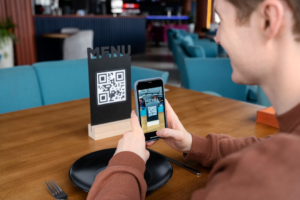QR codes have become a popular tool for businesses to bridge the gap between physical and digital marketing. These two-dimensional barcodes can store various types of information, such as URLs, contact details, or product information. However, while QR codes offer numerous benefits, there are several common mistakes that businesses make when implementing them. In this article, we will explore the top QR code mistakes to avoid to ensure a successful QR code marketing campaign.
Introduction
QR codes have gained significant popularity in recent years due to their ability to provide quick and convenient access to digital content. However, to make the most out of QR codes, it’s essential to understand the potential pitfalls and mistakes that can hinder their effectiveness. By avoiding these mistakes, businesses can optimize their QR code campaigns and achieve better results.
Importance of QR Codes
Before diving into the mistakes, let’s briefly discuss the importance of QR codes in today’s digital landscape. QR codes offer a seamless way to connect offline and online experiences. They can be placed on various marketing materials, such as flyers, posters, product packaging, and even business cards. By scanning a QR code, users can instantly access relevant information, promotions, or exclusive content, providing an interactive and engaging experience.
QR Code Mistake
1: Poor Design
One of the most common mistakes is creating QR codes with poor design. A QR code should be visually appealing, yet functional. Using excessive colors or complex patterns can result in scanning difficulties. It’s crucial to ensure high contrast between the code and the background to enhance readability. Additionally, considering the size and placement of the QR code is essential for users to scan it easily.
2: Lack of Testing
Failing to test QR codes before launching a campaign is a significant mistake. Testing helps identify any technical issues, such as incorrect URLs or decoding problems. It’s important to scan the QR code on different devices and platforms to ensure compatibility. By thoroughly testing the QR codes, businesses can prevent user frustration and ensure a smooth experience.
3: Not Optimizing for Mobile
With the majority of users accessing content through mobile devices, it’s crucial to optimize QR codes for mobile experiences. The landing pages or websites that QR codes lead to should be mobile-friendly and responsive. Avoiding Flash or other technologies that are not supported on mobile devices is essential to provide a seamless user experience.
4: Insufficient Call to Action
A common mistake is not providing a clear call to action (CTA) alongside the QR code. Users need to understand what they will gain by scanning the code. Including a brief and compelling message that conveys the value or incentive can significantly increase the scan rate. Whether it’s a discount, exclusive content, or a contest entry, a well-crafted CTA can motivate users to engage with the QR code.
5: Ignoring Analytics
To measure the success of a QR code campaign and make data-driven decisions, it’s crucial to track and analyze the QR code scans. By implementing analytics tools, businesses can gain insights into user behavior, scan locations, and the effectiveness of different marketing channels. This information can help optimize future campaigns and improve overall performance.
6: Using Non-Scannable Surfaces
Placing QR codes on non-scannable surfaces is a common mistake that renders them ineffective. QR codes should be positioned on flat and easily accessible surfaces. Avoid using materials or surfaces that can distort the code or prevent successful scanning, such as curved or glossy surfaces. Ensuring a clean and unobstructed scanning experience is crucial for user satisfaction.
7: Neglecting Error Correction
QR codes have built-in error correction capabilities that allow them to remain scannable even if partially damaged or dirty. However, neglecting error correction levels can lead to a higher failure rate. It’s recommended to use an appropriate error correction level based on the scanning environment and the amount of information encoded.
8: Placing QR Codes in Inaccessible Locations
The location of QR codes plays a vital role in their success. Placing QR codes in inaccessible locations, such as high on a billboard or in areas with limited internet connectivity, can significantly reduce their effectiveness. QR codes should be positioned where users can easily scan them, ensuring a seamless experience.
9: Poor URL or Landing Page Selection
When creating QR codes, it’s essential to choose appropriate URLs or landing pages to ensure relevance and provide a valuable user experience. Directing users to a generic homepage or unrelated content can lead to confusion and disengagement. Tailoring the destination to the QR code’s purpose enhances the overall user experience.
10: Ignoring Security Concerns
Security is a crucial aspect of QR code implementation. Ignoring security concerns can expose users to potential risks, such as phishing attacks or malware. It’s important to ensure that the content behind the QR code is secure and trustworthy. Regularly monitoring and updating the destination URLs or landing pages can mitigate security risks.
11: Lack of Clear Instructions
Providing clear instructions on how to scan a QR code is often overlooked. Users who are unfamiliar with QR codes may need guidance on how to scan them using their device’s camera or a dedicated QR code scanning app. Including simple instructions can increase the likelihood of successful scans and user engagement.
12: Overlooking Branding Opportunities
QR codes can be customized to reflect a brand’s visual identity and create a cohesive brand experience. Overlooking branding opportunities by using generic or unbranded QR codes is a missed chance to strengthen brand recognition and create a memorable interaction. Adding logos, colors, or incorporating the QR code into a design can enhance brand visibility and improve overall brand perception.
FAQ
Q1. Can I create a QR code with multiple colors?
Yes, you can customize the colors of a QR code. However, it’s important to ensure high contrast between the code and the background for optimal scanning.
Q2. Can QR codes be scanned by any smartphone?
Most smartphones have built-in QR code scanning capabilities through their camera app. However, if your device doesn’t support it, you can download a QR code scanning app from the app store.
Q3. How do I track the number of scans my QR code receives?
You can track QR code scans by using analytics tools specifically designed for QR code campaigns. These tools provide insights into scan rates, user behavior, and other valuable data.
Q4. Are there any security risks associated with QR codes?
QR codes can pose security risks if they direct users to malicious websites or contain malware. It’s essential to ensure the destination URLs or landing pages are secure and trustworthy.
Q5. Can I edit a QR code once it’s generated?
Once a QR code is generated, its content is fixed. If you need to make changes, you’ll have to generate a new QR code with the updated information.
Conclusion
In conclusion, QR codes are powerful marketing tools when used correctly. By avoiding the common mistakes outlined in this article, businesses can maximize the effectiveness of their QR code campaigns. From designing visually appealing codes to optimizing for mobile experiences, testing, providing clear CTAs, and analyzing data, each step contributes to a successful QR code marketing strategy.












